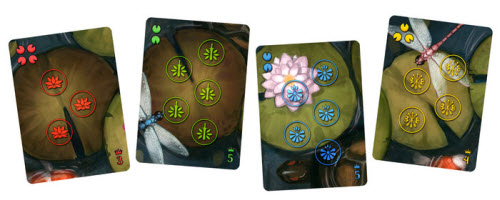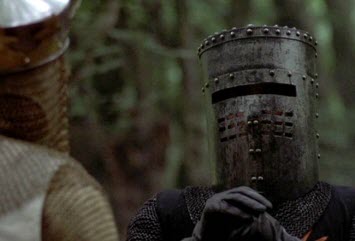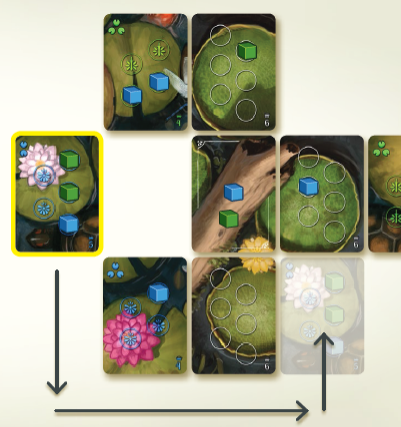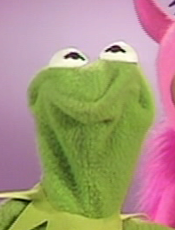When people like to think of old board games, they usually consider games like Monopoly, Risk, or Clue. After all, these games have existed for decades, and by today’s standards, these games, with their dice rolls and unadorned boards, aren’t often as catchy as their modern counterparts.
Of course, board games are far, far older than that. Games like Senet, Go, Backgammon, Pachisi, Chess – these games have endured for centuries. Some of their birthdays reach into the thousands of years. And there’s a very simple reason for this: people like them. There is an intrinsic nature to what these games offer that entices people on some level.
Almost all of these games are what we now call abstract games. Abstract games are typically devoid of any theme, instead appealing to people who appreciate tests of spatial, memory, and / or mathematical skills. The question becomes, is that is what we also have here, in Bullfrogs? The success of an abstract game depends on it being relatively easy to learn but challenging enough to make people want to come back. But must they also lack any semblance of a theme?
An Abstract Leap
Abstract games are generally designed for players to pick up and follow along with quickly, but they also usually require many playthroughs to build up any sort of expertise with them. This is also the case with Bullfrogs. In the game, each player is given a deck of ten color-coded cards. Each card depicts a lily pad in the pond that is floating around a central log.
During each players turn, they must choose a card from their hand and play it on at least one side to of an existing card. Cards like these:

Prototype Shown
Each card contains between two and four lily symbols, denoting how many available actions that turn. Bullfrogs has two possible actions. The first is to place a frog unit. Each card in Bullfrogs has between three and six circles, which is the number of spaces that unit (frogs) must occupy for the card to be scored. However, you are not able to place your units on the card you just played. Instead, you may place a frog on an open space on any lily pad in the same column or row. (This makes sense, as when I think of ponds, I too see them as grids.)

Ribbit.
The second action is to Sabotage an opponent’s frog. This consists of moving an opponent’s frog to another space in the played card’s row or column – unless it’s one of a player’s two rare Bullfrog units. Bullfrog units are the bigger, tougher, meaner frog enforcer units, and they refuse to be intimidated. They’re like the Black Knight of the game.
After all actions are taken, any full lily pads are scored by comparing the number of frogs on it. If a player has a majority of the units, they score the value of the card and remove it by letting it sink into the murky waters. (WARNING: do not actually play Bullfrogs in a tub or pond. ) The player then salvages a couple frogs (the losing players’ frogs first) by moving one to another pad in each direction if possible. This can also cause chain scores to happen.
Lastly comes the most abstract aspect of Bullfrogs: if this card removal causes another card to become separated from the rest, that player may move it anywhere in order to reattach it, which can drastically change what the next person may want do.
This keeps going until everyone plays all ten of their cards, and the point leader becomes the next Frog King. Or Emperor Croak. Or something. It doesn’t matter.

One possible card movement.
Prototype Shown
A Simple Country Theme
Bullfrogs is the type of game with very easy to understand rules, but that mastering it can be a bit of a challenge. Even though the game doesn’t last all that long, it ebbs and flows in a manner that makes it difficult to track every possibility yet without becoming a complex Chess match, making for an ideal family-friendly game. The rearranging of the tiles after scoring is particularly interesting, as it affords the player a number of strategic options. Do they do it to set themselves up for easy scoring their following turn, to prevent their opponent from scoring multiple cards, or do they purposely aim to force their opponent to have to waste actions trying to stop them? All of these are simple but viable options in Bullfrogs.

It’s his battle stare.
Abstract games traditionally don’t require a theme, however. Indeed, one can argue that any theme at all pushes Bullfrogs out of the abstract category and more into a light Area Control game. Whichever your terminology choice may be, the result is still an entertaining filler game. While Bullfrogs could easily work sans all of the angry Kermits, in reality the theme to Bullfrogs doesn’t actually come into play all that much. It keeps the flavor light enough to provide some context to a player’s actions without detracting from the mechanics. (The now-funded frog meeples are a nice touch though.) Bullfrogs is designed to be light, quick, and accessible to a variety of player groups, and it succeeds at doing that without needing to be heavy-handed with the frog-based setting or complicated rules.
Ultimately, Bullfrogs is a game about skirmishing around for the glory of the vernal pond and control of the all-mighty tree trunk. Do you have what it takes to be the final frog on the log? Find out in Bullfrogs, currently in its final days over on Kickstarter!
Photo Credits: Monty Python by Sony Pictures; Kermit by Walt Disney Studios.
